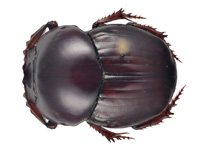Abstract
Seven new species of Malaconothridae from Papua New Guinea are described: Tyrphonothrus papuensis sp. nov., Malaconothrus dispela sp. nov., M. gogolensis sp. nov., M. laensis sp. nov., M. liklik sp. nov., M. murmurensis sp. nov. and M. weigmanni sp. nov.; one from New Caledonia: Tyrphonothrus kanaka sp. nov. and three new species from Australia: Tyrphonothrus seniczaki sp. nov. from Victoria, T. kimberleyi sp. nov. and Malaconothrus tidbinbilla sp. nov. from the Australian Capital Territory. These, and previously-described malaconothrids from Australia, are allocated to a series of species groups based on shared characters (Tyrphonothrus: Maior, Sacculus and Crassisetosus; Malaconothrus: Marginatus, Monodactylus, Crispus, Plumosus and Opisthoseta). The species groups were assessed against (a) the biogeographical distribution of their component species and (b) the phylogenetic relatedness of those species. The majority of species groups have a cosmopolitan or semi-cosmopolitan distribution, with the Crassisetosus and Opisthoseta groups distributed on former Gondwanan continents. These findings are consistent with the conclusion of Hammer and Wallwork (1979) that Malaconothridae evolved as part of the Pangaean fauna and that the Opisthoseta group evolved after Gondwana had separated from Laurasia.

